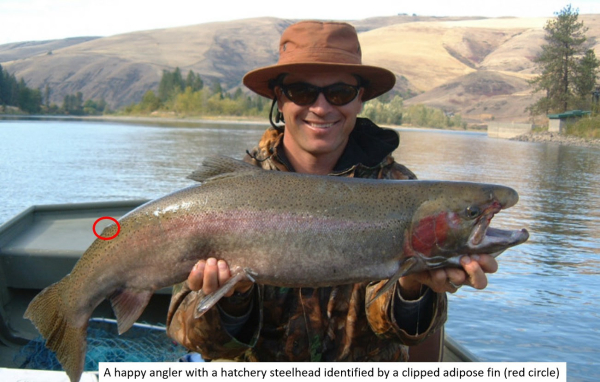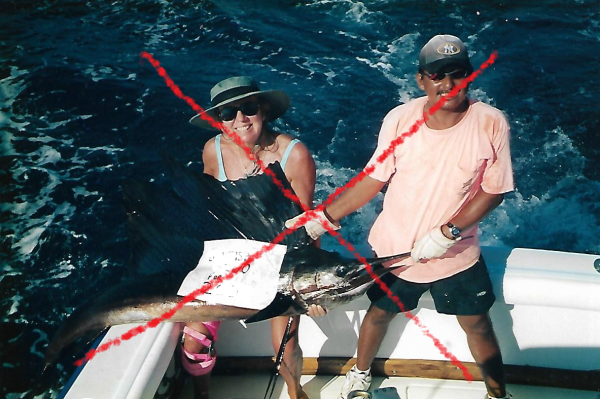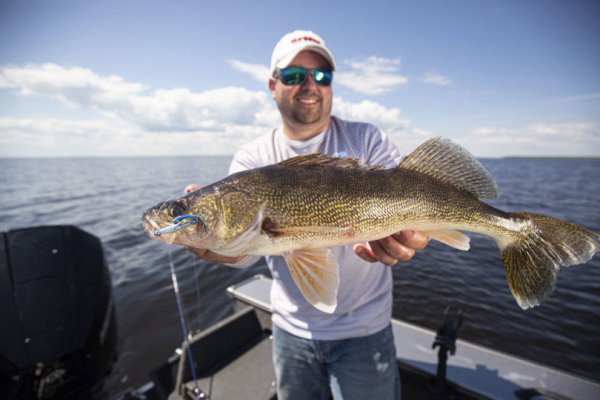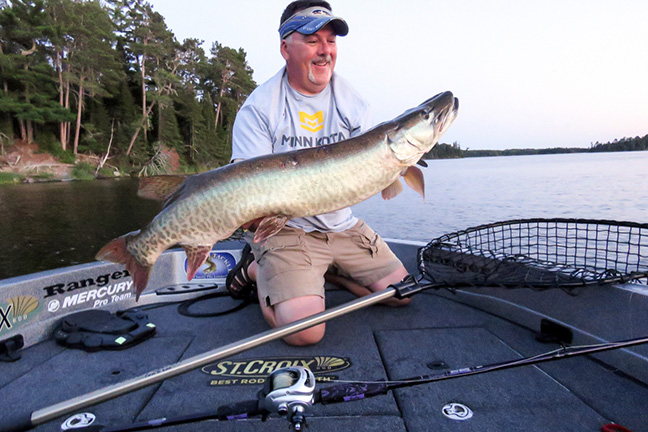June Bass at Neely Henry
with
Karen Rae Elkins
There
is something special about Coosa River lakes in June. The bass, both spots and largemouth, are
stacking up in predictable places and feeding.
Neely Henry is one of the best on the chain for a trip this month.
The
Alabama DNR calls Neely Henry “one of the best-kept fishing secrets in
Alabama.” Running 77 miles from its dam to the Weiss Dam, it covers 11,235
acres that vary from a river run on its upper end to shallow flats and creeks
on the lower end.
Built in the late 1950s, many of the creeks
and ditches are silted in and the shallows are full of grass. It can be a
dangerous lake to run since there are few markers and many creeks have stump
fields and shallows that will eat lower units.
Be very careful when running this lake.
Largemouth are in the lake in good numbers
in the 15 to 18 inch range according to the Alabama DNR. The DNR also calls the
spot population “exceptional” for large fish and the numbers of spots
in the 14 to 20 inch range is one of the best in the state.
Karen Rae Elkins was born in Huntsville but
moved closer to Neely Henry Lake when ten years old. She grew up fishing and loves it. The farm
she lived on had five ponds and she would fish for anything that would bite,
but one day she got her fathers’ bass fishing equipment, caught some bass and
was hooked herself.
Her father owned The Fishing Hole bait and
tackle store in Anniston so she was exposed to a lot of fishing talk. When her
father retired he asked her to fish tournaments with him and they competed on
the Guys and Dolls and Cartersville Couples Trails, as well as in many local
tournaments.
When the Women’s Bass Tour was started Karen
saw how many lakes in her area were on the schedule so she signed up. She really likes the camaraderie and fun from
this trail and says it has made her a better fisherman.
This spring Karen agreed to run the Team
Trails tournament trail on the Coosa River and is also starting a Youth
Tournament Trail in this organization. She fishes the tournaments as well as
running them.
Karen’s best five fish limit came a few
years ago on Neely Henry when she brought in 18.18 pounds. And she won a
tournament on April 4 this year with five weighing 14.4 there. She likes
fishing and likes competition so tournaments are a good fit for her.
Sponsors mean Karen is able to fish more
than she would be able to without them and her sponsors include: Mojo Weights,
Reel Grip, Bo’s Jigs, Team Trail Tournaments and JJs Magic. She also supports the Magic Foundation and
Second Chance, to organizations that are very important to her.
“The bass are feeding in the grass in
June and are fun to catch,” Karen told me.
The spawn is over and the bass are hungry. She likes to start out shallow in the mornings
catching these bass, then moves to points, humps and ledges later in they day
when water is moving. And a third good
pattern is fishing docks.
For fishing the grass Karen likes the Mojo
rig and says it gives her a slight edge over the more common Texas or Carolina
rigs most fishermen use. The Mojo rig gives the bait a little different
look. It is a thin cylindrical weight
with a rubber band you insert so you can “peg” it on your line.
“Start with your weight six inches from
the bait then move it closer if
you aren’t getting bites” Karen said. A variety of plastics will work in
June and she tries different ones until the fish tell her what she wants. A Sweet Beaver is always a good choice but
she also catches bass on Zoom Finesse Worms and Brush Hogs and Strike King
Lizards.
A few basic colors work well on Neely Henry.
Watermelon Red, Junebug and Green Pumpkin are all standard colors. And Karen always dips her baits in JJ’s
Magic, saying that attracts the bass and makes them hold the bait longer. She will often dip the tails in either red or
chartreuse but if she does not want this flicker of color she uses the clear to
add scent.
Around docks Karen flips a Bo’s Jig and
really likes the color named for her. The “Karen’s Jig” color has
green pumpkin, black and root beer strands in it. She tips it with a Sweet Beaver or a Zoom
Chunk and works the jig under the docks, around all pilings and in any brush
around the docks. This works well when the sun is bright.
If current is moving bass will stack up on points,
humps and ledges to feed. Karen likes a crankbait that runs seven to ten feet
deep for fishing those areas and her favorites include Lucky Craft CB Square
and Jackall Muscle baits.
Karen showed me around Neely Henry a few
weeks ago and the bass were just starting to move onto their June holes. We put in down the lake and fished early,
then took out and went up to Gadsden and fished the river some. The lake is varied and the patterns can
differ.
The following spots all hold bass this
month:
1. N
33 53.547 – W 86 06.603 – Back in Canoe Creek just downstream of Canoe Creek
Marina you will see some brush tops out in the middle. This brush is on a hump
where the channel swings across the creek and grass grows on it in June, too.
It is a good place to find bass, especially if there is any current moving down
the creek.
Going up the creek watch for a nice house on
your right with a gray dock with a “For Sale” sign on it. Stay on
that side of the creek since the shallow hump is out in the middle. When you
get near the gray dock look to your left and you should see the brush on the
hump. If you get to the marina you have gone too far.
Karen will start on the channel side and
fish all around the hump, pitching her Mojo rigged Sweet Beaver of Brush Hog into
holes in the grass and moving it through the thinner areas of grass. For some reason Junebug with a chartreuse
tail seems to work especially well here.
Drag your bait through the grass and work it
slowly and carefully. Be ready to set the hook when you feel any weight or your
line moves at all. If there is current try to throw your bait so you work it
with the current in a natural movement.
2. N 33 51.375 – W 86 03.217 – Running down
the main river from Canoe Creek you will see the opening to Greens Creek on
your left. Off the upstream point are
two small islands. Idle in to the point
but do not go between the islands. There are lots of snags here.
When you get to the point you will see an
older dock to the left of two cement boat ramps that are side by side. Start at
that dock and work around the point, fishing around to the inside of the
point. Fish the grass here with a Mojo
rig, work a crankbait over the shallows and pitch a jig and pig to the docks.
The jig and pig is especially effective if
the water is clear and the sun is bright, driving the bass to the shade. Fish all the cover carefully. Karen says she
has caught several five-pound-plus bass on this point.
3. N 33 50.619 – W 86 04.472 – Beaver Creek
is a good big-bass creek and Karen has several types of cover and structure she
fishes in it. As you go into the mouth
you will see Greenport Marina on your right.
There is a seawall in front of the store and storage area then a long
point runs upstream. There are picnic tables on the point. Off the end of this
point is a hump or island, depending on the water level. When we were there it
was slightly under water.
Start near the store and fish the seawall
toward the point. Fish the Mojo rig and
crankbaits along here. This is the only place Karen will rig an Old Monster
worm on her Mojo rig. The extra big worm attracts quality bites on this
spot. Work from right on the seawall out
to several feet deep. There are patches of grass to fish and some other cover.
When you get out near the end of the point
fish the hump and around it into the cove behind it. Work the whole area carefully but Karen says
the best area is the seawall at the store, so pay extra attention to any cover
here.
4. N
33 50.175 – W 86 05.807 – You can run into Beaver Creek on plane until you see
the silo ahead on your right. Stay to the left side going in. When the silo comes into view it is a good
idea to slow down and idle the rest of the way due to stumps and shallows.
When you get back about even with the silo
on your right you will see a grass point on your left. There are cattails, rocks, grass and stumps
starting at this point working upstream and the channel swings on this side
making it even better. Shallow grass
near deeper water is usually better, but keep in mind deeper water here might
mean seven feet deep.
Fish along the left bank working your Mojo
rig through the grass. Try to hit any
stumps you can see and also probe for hidden stumps with your weight. Fish on up this bank and there will be a grass
island on your right and some big rocks on your left. There is a spring in the
rocks that keeps the water cooler and moving some here. Fish around the rocks and the island, too.
This is one of Karen’s best tournament holes.
5. N
33 50.054 – W 86 06.448 – Idle on back into the creek until it narrows down.
The bottom back here is sandy and there is lots of grass and stumps to fish.
And overhanging trees in some areas provide shade. Work all the cover in the
water, including the fence rows running off the bank, with a Mojo Rig and a
crankbait.
Fish slowly and carefully. Some big bass
hold up back here in June. When you
catch one bass work the area hitting every bit of cover, there is often more
than one in a spot. You should go as far
back as you can get your boat if you are catching fish.
Karen says two or three kinds of cover
together makes for a hot spot to catch a bass. Look for wood in the grass,
combining two kinds of cover. If there
are also rocks or a drop it makes it even better. Fish any combinations of
cover carefully.
6. N
33 44.973 – W 86 03.559 – Run downstream and watch for a big round point on
your right. On the upstream side is a boat ramp and there is a dock on the
downstream side. The house has a “For Sale” sign.
This point has deep water just off it where
the old channel swings by but it comes up quickly with a shallow ledge on the
downstream side. Current coming down
the river hits this point and moves across it, creating an eddy on the
downstream side. Fish a deep diving crankbait here, casting up near the bank and
working it across the shallow water, making it dig bottom, and then over the
drop into deeper water. Fish with the current, moving water makes the fish bite
much better here and other spots. Fish all around this point, covering both the
upstream and downstream sides.
7. N
33 48.742 – W 86 04.032 – At the mouth of Shoal Creek the downstream point is
good and all three kinds of cover you want to fish is one it. Current hits this
point, too, and there is deep water just off shallow water. There is a wood
house with a tin roof and three dormers on it.
AS you go into the cove on the upstream side there is a gray boathouse
with turquoise doors on it.
Start at the dock and flip a jig to it,
especially if it is sunny. Work a
crankbait all around the point and the upstream cove. Then fish a Mojo rig in
the grass. Work each as you come to them
to cover the area completely.
Current hitting this area makes it better
but wind blowing in helps, too. Wind will create a chop on the water, breaking
up the light and making it more likely a bass will hit an artificial bait, and
it also moves water, creating a current. Wind is your friend as long as it is
not too strong to control your boat.
8. N
33 48.634 – W 86 03.764 – Across the river is a big bluff rock wall and a small
rock island off it. The bluff wall is on
the upstream side of the opening to a big cove and the water is very deep off
it. Three was an old trotline hanging on
the rocks with some dried fish on it the day we fished. It looked like some
kind of voodoo charm! This is a great
spotted bass hole and Karen works all around it.
This is a good spot to rig a Finesse worm on
your Mojo Rig and throw it right on the bank.
Move it slowly and let if fall down the face of the rocks. Don’t move it
much or it will fall too far, dropping past fish too quickly.
There is a stump row on the downstream side
of this point, too, another combination of types of cover. Fish them with the
Mojo Rig but also flip a jig and pig right against the rocks and work it out,
trying to hit stump.
9. N
33 48.891 – W 86 05.325 – Run back into Shoal Creek and watch on your left for
a yellow house with a brown roof and a boathouse with two doors in front of
it. All the way across the creek is a
big flat and hump with stumps on it. On the bank on that side you will see a
mobile home on the bank. Idle straight toward the mobile home and watch your
depthfinder.
You will be in about 10 feet of water on the
flat then it will come up to about five feet deep. You will still be a long way
off the bank, in front and upstream of a red door dock in front of the
trailer. There is a stump rod on this
shallow hump and a small ditch runs out near it.
Karen will work back and forth along this
drop fishing crankbaits and a Mojo Rig. She will work it a long time because
she says you never know when bass will move up on this spot and feed. And it
constantly replenishes itself from the deeper water nearby.
10. N 34 00.816 – W 85 57.072 – It is a long
run upstream of the bridges in Gadsden so it is a good idea to trailer up here
if you can. Going upstream from Gadsden watch for a rock bluff wall on your
left just as you see the trailers at Tillison Bend Park. You will be upstream
and the same side of the mouth of a fairly big creek that has a blowdown across
it.
Start at the beginning of the rock wall and
fish it all the way past the first three docks, a very long way upstream. Karen
says it takes a long time to work this spot correctly and you can spend most of
a day on it. It is worth it, this is where she caught the 18 pound limit in a
June tournament.
Karen keeps her boat in close to the wall in
about 11 to 12 feet of water and makes three casts before moving up the wall.
On cast will be in toward the wall as a slight angle with the Mojo Rig. She
then makes a long cast to the wall ahead of the boat and works it back at an
angle to the boat The third cast will be straight ahead of the boat and is
worked back to the boat.
Fishing like this covers all the water from
the face of the wall out to 12 feet deep or so. To do it right can take hours
working along here. When she gets to the docks Karen fishes a jig and pig
around them. Current always makes this
spot better. Karen says she does not even fish it if the water is not moving.
11. N 34 01.170 – W 85 58.766 – Run back
downstream and you will see a golf course on your left and more holes across
the river on your right. You are close
enough to see the sharp bend back to your left going to the bridges and the
water station in the bend.
Watch for a creek opening on your right that
goes back to the golf course. You will see some big PVC pipe going into the
water and some smaller pipe running out above the water and dropping down on
the river side. As you idle into the creek there is another set of pipes and
they are for the pump house you see on the bank that waters the golf course.
When you get back a ways from the river the
creek splits and straight ahead it will go around and under a wooden golf cart
bridge. Go back to the bridge area and
fish all the grass and stumps in the back of this creek. Karen will pitch a jig
to wood cover in the grass and also run a shallow diving crankbait over the
grass that is under the water.
Another trick Karen uses in this and similar
spots is to Mojo Rig a big lizard like the Zoom Magmum or the Strike King 3X
lizard. These big baits draw strikes from big bass. Work them through the grass
back in this creek in June.
12. N 33 59.205 – W 85 59.855 – Run
downstream past the bridges and watch for a big three story yellow house with
white roof and trim on your right. The house sits on the beginning of the
upstream point of Big Willis Creek on that side and looks like it is in a park.
Across the river from the house is a small ditch
that is not real noticeable as you run by. You will see the bank flatten out
and go back a little. This old ditch has filled in but it creates a shelf in
front of it that holds good fish.
Keep your boat out from the bank and cast a
crankbait to the bank. Dig the bottom coming out the shelf to the edge of the
drop. This is a good spot that does not get a lot of pressure since it is not
real noticeable.
13. N 33 58.493 – W 85 59.664 – Run down the
river past the old closed park on your left and watch for a small creek opening
on that side. There are to white PVC poles on either side of the opening and a
pasture or field on the downstream side of it. The poles mark two big stumps.
Karen fishes the mouth of this creek and
works the stumps with her baits. She fishes on down the bank a hundred feet or
so, fishing the grass and wood cover. Bass often stack up here and current
helps.
Also work into the small creek. There are
stumps, fence rows and grass beds to fish in it.
14. N
33 57.190 – W 85 57.768 – Run down the river until you see a long narrow island
well off the left bank. This small island sits in front of a river ledge with
trees on it that separates the river from a big slough behind it. There are houses and docks in the slough and
a bunch of wood duck nests, especially on the downstream end around the docks
there.
There is a small opening on the upstream end
of this slough and Karen often starts there in the morning, fishing into the
shallows, working grass and stumps. When you get to the other end where it
opens back up there are two PVC poles, one with green paint on one side, that
mark the channel going it.
Karen will fish the edges of this cut and
the area around it, probing for stumps and trash. She will also work up the
river side of the ledge, it drops off pretty quickly and is hard clay. Bass
hold all along it.
These 14 spots offer a wide variety of kinds
of places to fish, with some on the main lake and more up the river. There are
many more similar spots. Check these out to see Karen’s patterns then explore
to find more, just be careful.
Karen guides on Neely Henry and you can
contact her to get her to show you first hand how she fishes here. Call her at 256-454-3804 or her web site at
www.karenslake.com. You can also get information about her Team Trails
tournaments.




